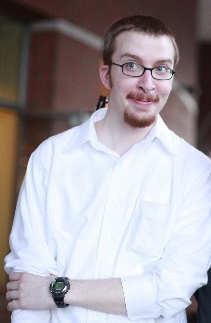Health 2.0: Who’s Not at the Table?
 On May 14 and 15 of this year, I had the opportunity to attend the Health 2.0 Spring Fling conference in Boston, MA. According to their website, Health 2.0 is about bringing “together the best minds, resources and technology for compelling panels, discussions and product demonstrations.” I have to admit I was a bit surprised when my press pass was approved — my main platform is Twitter, so I give them credit for acknowledging the importance of diversity in media presence.
On May 14 and 15 of this year, I had the opportunity to attend the Health 2.0 Spring Fling conference in Boston, MA. According to their website, Health 2.0 is about bringing “together the best minds, resources and technology for compelling panels, discussions and product demonstrations.” I have to admit I was a bit surprised when my press pass was approved — my main platform is Twitter, so I give them credit for acknowledging the importance of diversity in media presence.
That’s essentially where the diversity ended, though. Most of the people at the conference looked like, well, me. Middle or upper class white guys. This was acknowledged by co-founder Indu Subaiya when I had a chance to sit down with her and her fellow Health 2.0 leader Matthew Holt to discuss how Health 2.0 was relevant to underserved communities. She mentioned that, like most tech conferences, there was a visible lack of diversity at the conference, and it’s something that troubled her.
So, when I was asked by Laura Montini, a writer for Health 2.0 News, to write a post on Health 2.0 and its relevance to underserved communities, I was conflicted. It’s obviously an important issue to me personally, but am I really the right person to write it?
I don’t think so.
This is an issue we’ve run into with Occupy Healthcare as well. When we talk about underserved communities — communities of color, LGBTQ communities, immigrant communities, marginally housed communities, and other groups traditionally ignored by the medical establishment, it is typically just that. We talk about these communities, not with them.
This is not enough.
We should seek to create a truly collaborative healthcare environment, with horizontal structures guiding the organizational principles. At an “unconference” table, Sarah Krug, president-elect of the Society for Participatory Medicine (SPM), noted the importance of having patients involved in the design of applications rather than simply as an after-thought. Just as the SPM has been given a seat at the table, so too must underserved communities. There are applications being developed at code-a-thons that may relevant to these communities, but if they are not at the table, involved at every level, how will we know?
Without acknowledging this, we won’t be able to move away from the current healthcare paradigm. The problems facing underserved communities cannot be solved by technology alone. As Shahid Shah noted during his Hello Health deep dive, “Customers don’t have a lack of technology problem. It’s a lack of sustainable business model problem.” Part of this sustainability should be an effort to address the systemic effects of racism, sexism, homophobia, and the social determinants of health that continue to create health disparities.
Can Health 2.0 solve all these problems?
Of course not.
However, you have to start somewhere, and with an international platform for transformative healthcare technology they have the opportunity to take steps not to recreate these systemic forms of discrimination.
So, what do we do now?
I was pleased to hear that Matthew and Indu are thinking about this as well. I imagine that they have their plates full coordinating Health 2.0 events across the globe, so the fact that this is registering on their radar is a good sign. We discussed a few possible paths to making Health 2.0 more inclusive.
Outreach to Community Health Centers: CHCs are on the front lines of working with underserved communities. They should be involved in conferences just as the big Matchpoint participants are. They need to be at the table, sharing the challenges they are facing and the innovative ways they are doing more with less in terms of technology. I suggested reaching out to the National Association of Community Health Centers, and they seemed very open to the idea.
Scholarships: Matthew has been very adamant about offering patients free registration to Health 2.0 events, and this is an idea that should be extended to underserved communities. Along with outreach to organizations that work with these communities, this could be a very powerful gesture.
Matchpoint Partnerships: This would involve including community organizations in conferences as partners, and encouraging the development of applications relevant to their mission and the challenges they face.
Consumer events: Low cost conferences geared towards patients would allow a much wider array of products to be featured, including those designed for and by underserved communities. I think this would be an interesting opportunity to explore applications that are working to solve problems not typically addressed at Health 2.0 events.
It was great to see that these are issues that the leadership of Health 2.0 is conscious of, and the steps outlined above would be a great first step towards creating a truly participatory healthcare system that is better, faster, and cheaper — for everyone.
Let’s work together to make it a reality.
Nate Osit is your average friendly Health IT geek. Follow his journey through the Health IT landscape on his blog Bio-Digital Jazz or on twitter @nateosit or find his posts on Occupy Healthcare.


 Idea for a guest post? Get in
Idea for a guest post? Get in